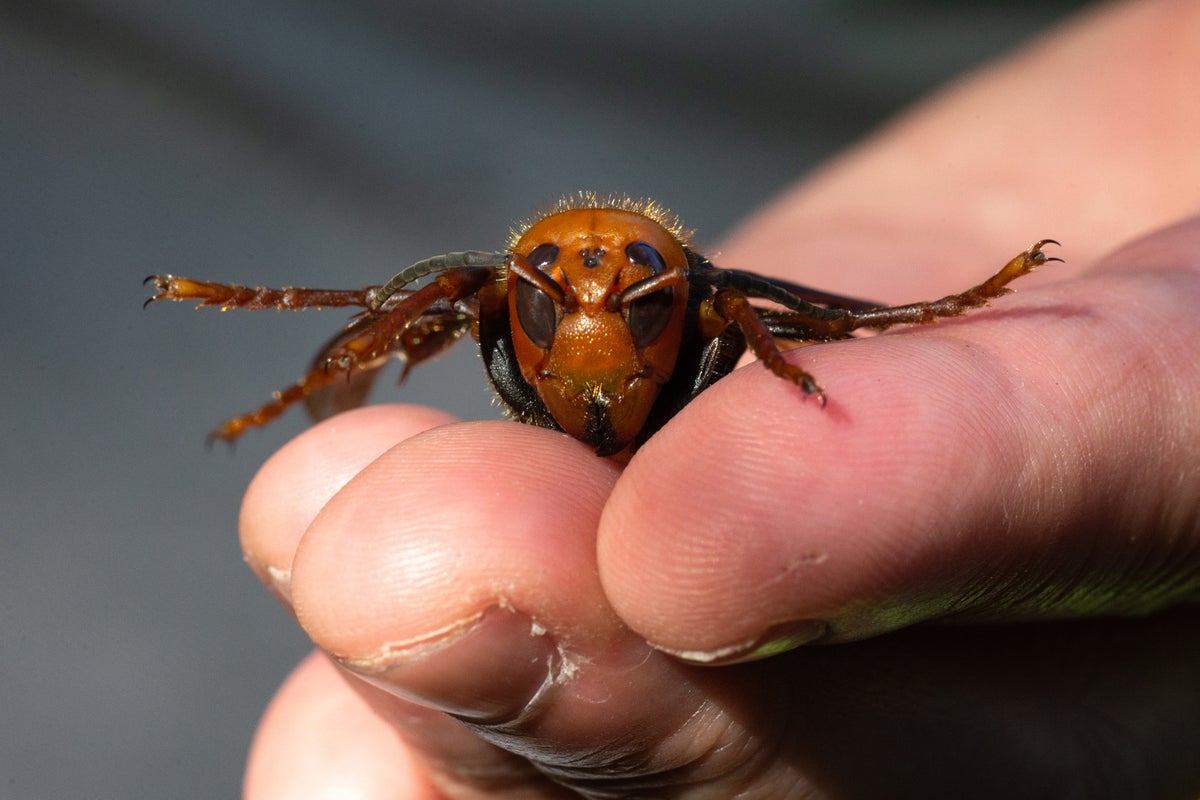To entomologists, the animal has always been known as Vespa mandarinia. But these giant wasps, with their deep brown eyes alongside their svelte gold and brown stripes, have become infamous as the “murder hornets.”
The insects made headlines in 2020, when a few individuals of the species — native to parts of Asia — were found in North America’s Pacific Northwest.
But today, the insects have a new, official name from the Entomological Society of America (ESA): the “northern giant hornet”.
Previously known by many as the “Asian giant hornet”, the society of bug experts officially bequeathed this new name to prevent any unintentional anti-Asian sentiment, they note in a press release.
“Northern giant hornet is both scientifically accurate and easy to understand, and it avoids evoking fear or discrimination,” the ESA’s president, Jessica Ware, said in the release.
The northern giant hornet has a powerful stinger that can cause an excruciating sting. In rare cases, they can kill people who are allergic to the stings or people who have had multiple stings at once, LiveScience reports. But the biggest targets of the insects are bees, as the hornet can devastate colonies in rapid fashion.
Prior to this week, the ESA did not have an official common name for the species, using just the scienitific name Vespa mandarinia. And despite others referring to the insect as the “Asian giant hornet” or the “murder hornet,” neither of those names met their guidelines for acceptable insect names, the society notes.
Last year, the group adopted official guidelines on insect common names that disallow any names that refer to “ethnic or racial groups and names that might stoke fear,” they said, as well as discouraging geographic references.
“Amid a rise in hate crimes and discrimination against people of Asian descent, usage of ‘Asian’ in the name of a pest insect can unintentionally bolster anti-Asian sentiment,” the society noted.
Since Asia is home to a number of wasps, the generalization of “Asian giant hornet” doesn’t add any helpful information about the species, they add. In addition to bequeathing a name on the northern giant hornet, the society also officially named two other wasp species native to Asia as the southern giant hornet and the yellow-legged hornet.
In light of recent discoveries along the Pacific Northwest, some wildlife officials have been worried that the northern giant hornets could spread to North America as an invasive species. If the species were to be established in the US and Canada, it could threaten native bees and honeybees, ESA says.
This isn’t the first instance of taxonomists re-assessing species names. Last year, the ESA proposed renaming the gypsy moth and gypsy ant, as that term is considered by some to be a slur for the Romani people, the Associated Press reported. Some people have also pushed to rename the “Asian carp”, an invasive fish in some US waters.
There’s also a movement to rename some species named after individual people. In 2020, the American Ornithological Society changed the name of a North American grassland songbird from “McCown’s Longspur” to “thick-billed longspur”. John McCown, the bird’s original namesake, served as a general in the Confederate Army during the US Civil War.
